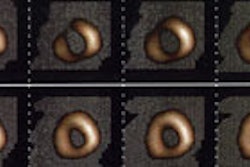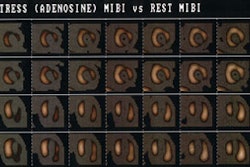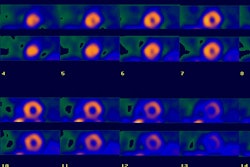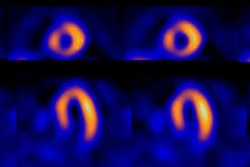Assessment of underlying etiology and cardiac sympathetic innervation to identify patients at high risk of cardiac death.
Wakabayashi T, Nakata T, Hashimoto A, Yuda S, Tsuchihashi K, Travin MI, Shimamoto K.
Cardiac (123)I-labeled metaiodobenzylguanidine (MIBG) activity has significant incremental prognostic value, but the difference between the long-term prognostic value of MIBG imaging for ischemic cardiomyopathies and the long-term prognostic value of MIBG imaging for idiopathic cardiomyopathies is not clear. This study aimed to determine whether assessment of cardiac (123)I-MIBG activities in ischemic and idiopathic cardiomyopathies have equally prognostic values and whether the kinetics are different because of the underlying etiologies. METHODS: After quantitative (123)I-MIBG imaging, 76 ischemic and 56 idiopathic cardiomyopathy patients were prospectively followed up for 54 mo. In addition to conventional parameters, cardiac (123)I-MIBG activity was quantified as a heart-to-mediastinum ratio (H/M) for early and late images and the washout kinetics were calculated using tomographic imaging. The data were compared with those obtained from 16 healthy volunteers. RESULTS: During follow-up, 29 deaths from heart failure, 11 sudden cardiac deaths, 2 deaths from arrhythmia, and 5 deaths from acute myocardial infarction were documented. Multivariate discriminant analysis using the Cox proportional hazards model showed that, in comparison with other variables, late H/M was the most powerful independent predictor of a lethal clinical outcome in ischemic (Wald chi(2) = 18.6502; P = 0.0000) and idiopathic (Wald chi(2) = 5.3394; P = 0.0208) groups. When patients with left ventricular ejection fraction (LVEF) < 40% were considered, late H/M had the greatest statistical power in both groups. Kaplan-Meier analysis showed late H/M to have an identical threshold (1.82) for both groups for identifying patients at risk of cardiac death. Likewise, when analysis was restricted to patients with an LVEF < 40%, the upper cutoff value of late H/M was 1.50 (P = 0.0358; log rank = 4.41) for ischemic patients and 2.02 (P = 0.0050; log rank = 7.86) for idiopathic patients. For patients with an LVEF < 40% and a late H/M less than the identified threshold of late H/M, the annual rate of cardiac death was greatest, 18.2%/y for the ischemic group and 11.9%/y for the idiopathic group. CONCLUSION: Cardiac (123)I-MIBG activity has the most powerful independent long-term prognostic value for both ischemic cardiomyopathy patients and idiopathic cardiomyopathy patients, indicating that both disease processes have common pathophysiologic and prognostic implications of impaired cardiac sympathetic innervation. Although combined testing of cardiac function and (123)I-MIBG activity is most likely to identify patients at increased risk of cardiac death, the underlying etiology of cardiac dysfunction may affect the threshold of (123)I-MIBG activity for the differentiation of high-risk patients.



